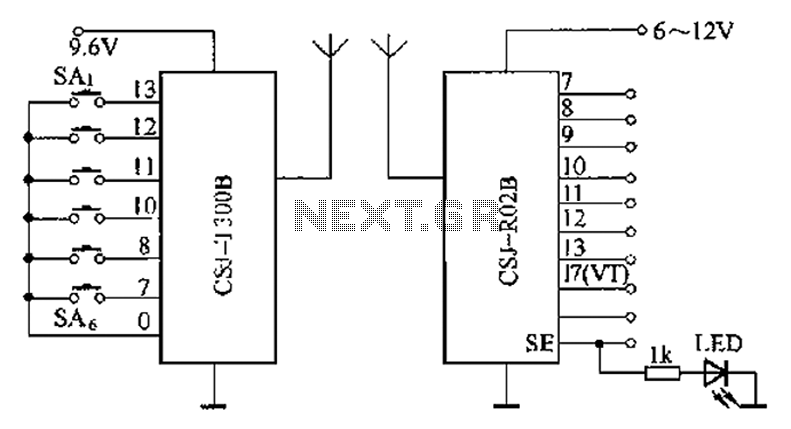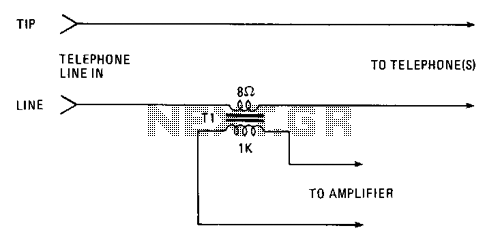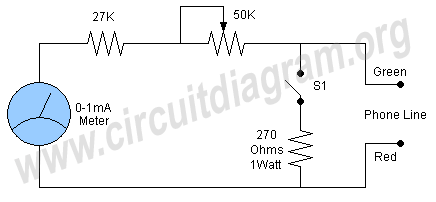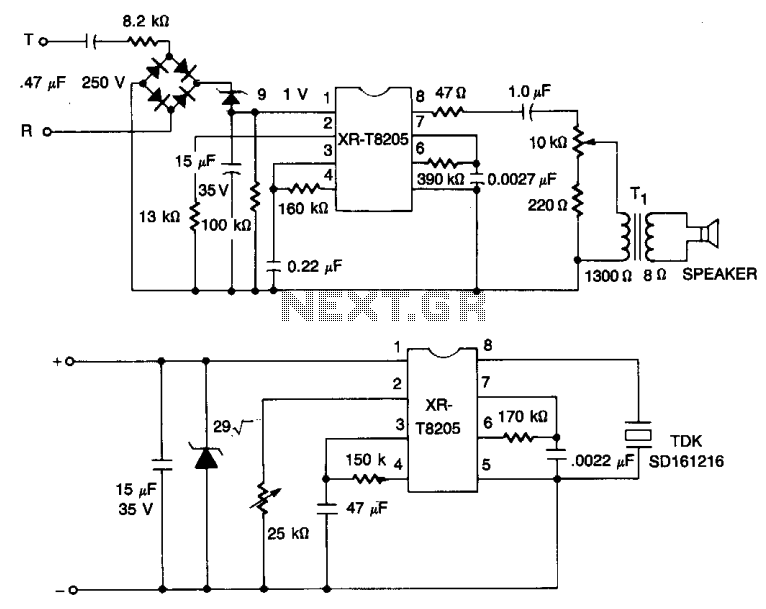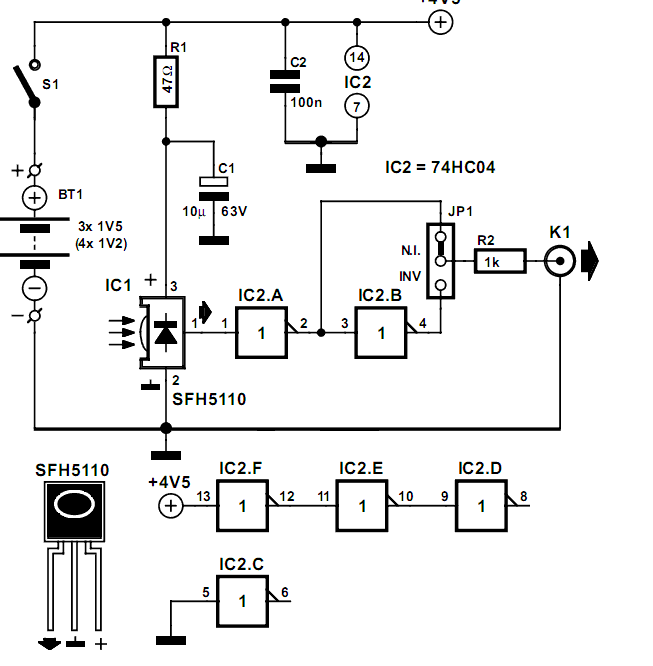
Plug-in remote telephone ringer
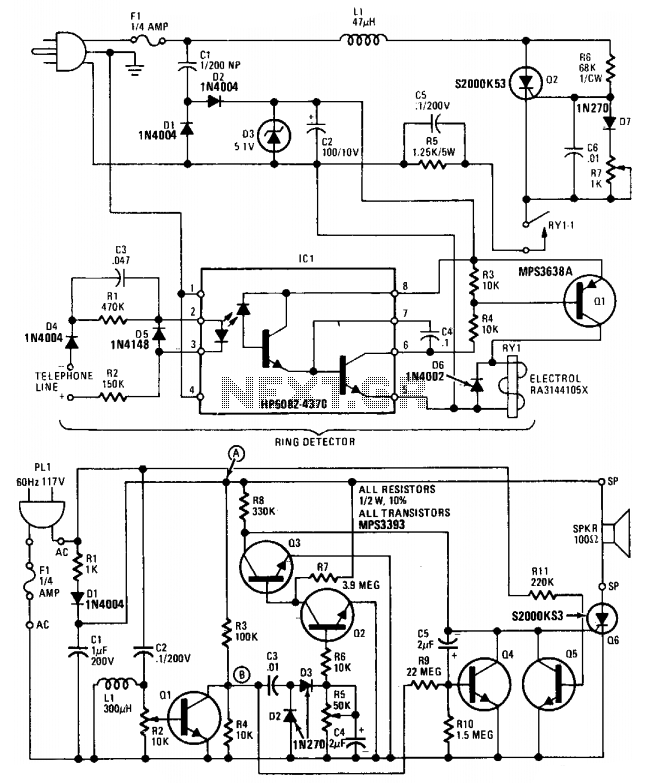
This device comprises a ring detector connected to the telephone line. When the telephone rings, the ring detector imposes high-frequency pulses on the AC power line. A receiver located anywhere on the same power line detects these pulses and produces an audible tone that synchronizes with the telephone signal.
The circuit operates by utilizing a ring detector, which is designed to recognize the ringing voltage present on the telephone line, typically around 90V AC at 20Hz or similar specifications, depending on the region. Upon detecting this ringing signal, the ring detector generates high-frequency pulses that are transmitted onto the AC power line. These pulses are typically in the range of a few kilohertz, ensuring they do not interfere with the standard AC power frequency of 50 or 60Hz.
The receiver is a critical component of this system, capable of picking up the high-frequency pulses superimposed on the AC line. It is designed to be sensitive to the specific frequency of the pulses generated by the ring detector. This receiver can be placed at any point along the same power line, allowing for flexibility in installation. Once the receiver detects the pulses, it processes the signal and generates an audible tone, which serves as an alert that the telephone is ringing.
To ensure effective operation, the circuit may include additional components such as filters to eliminate noise from the power line, amplifiers to boost the signal strength, and rectifiers to convert the AC pulses into a usable form for the receiver. The design must also consider safety standards to prevent any potential electrical hazards associated with connecting devices to the telephone line and the AC power line simultaneously. Overall, this system provides an innovative solution for alerting individuals to incoming telephone calls, especially in scenarios where the phone may not be easily heard.This device consists of a ring detector connected to the telephone line. When the telephone rings, the ring detector impresses high-frequency pulses on the ac power line. A receiver placed anywhere on the same power line detects these pulses and emits an audible tone in synchronization with the telephone signal. 🔗 External reference
The circuit operates by utilizing a ring detector, which is designed to recognize the ringing voltage present on the telephone line, typically around 90V AC at 20Hz or similar specifications, depending on the region. Upon detecting this ringing signal, the ring detector generates high-frequency pulses that are transmitted onto the AC power line. These pulses are typically in the range of a few kilohertz, ensuring they do not interfere with the standard AC power frequency of 50 or 60Hz.
The receiver is a critical component of this system, capable of picking up the high-frequency pulses superimposed on the AC line. It is designed to be sensitive to the specific frequency of the pulses generated by the ring detector. This receiver can be placed at any point along the same power line, allowing for flexibility in installation. Once the receiver detects the pulses, it processes the signal and generates an audible tone, which serves as an alert that the telephone is ringing.
To ensure effective operation, the circuit may include additional components such as filters to eliminate noise from the power line, amplifiers to boost the signal strength, and rectifiers to convert the AC pulses into a usable form for the receiver. The design must also consider safety standards to prevent any potential electrical hazards associated with connecting devices to the telephone line and the AC power line simultaneously. Overall, this system provides an innovative solution for alerting individuals to incoming telephone calls, especially in scenarios where the phone may not be easily heard.This device consists of a ring detector connected to the telephone line. When the telephone rings, the ring detector impresses high-frequency pulses on the ac power line. A receiver placed anywhere on the same power line detects these pulses and emits an audible tone in synchronization with the telephone signal. 🔗 External reference
